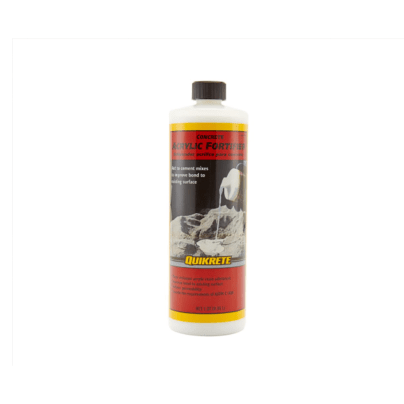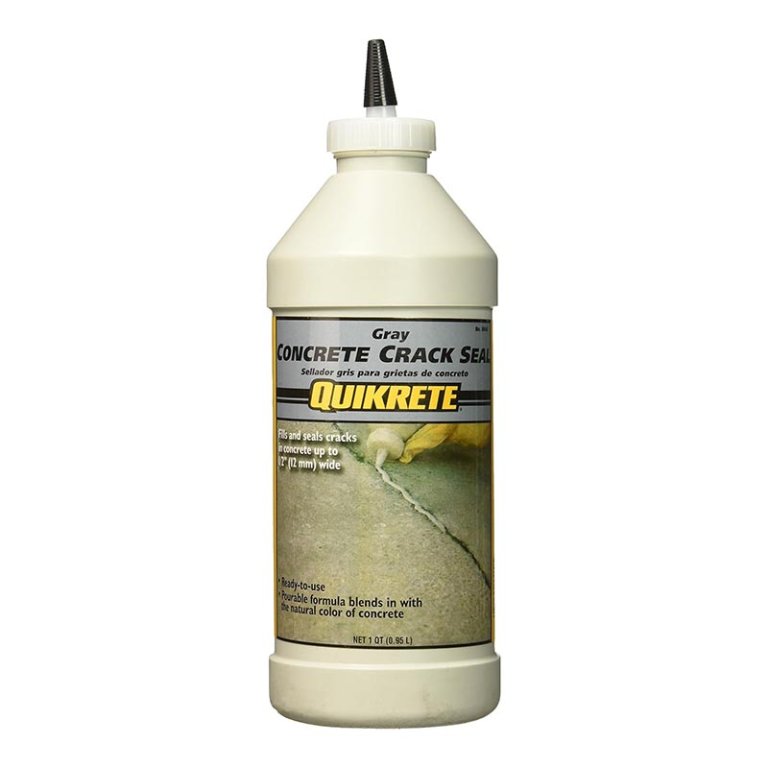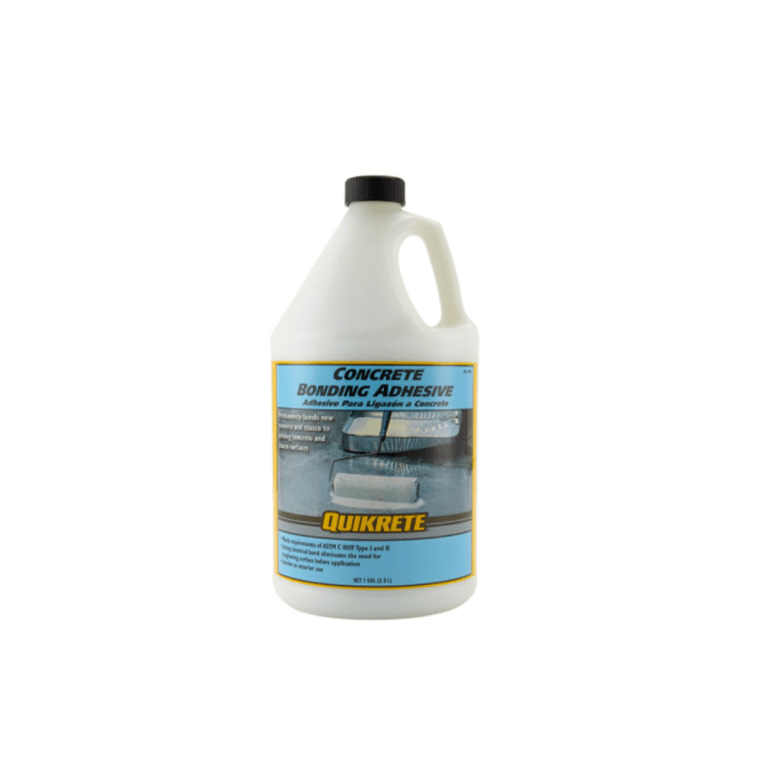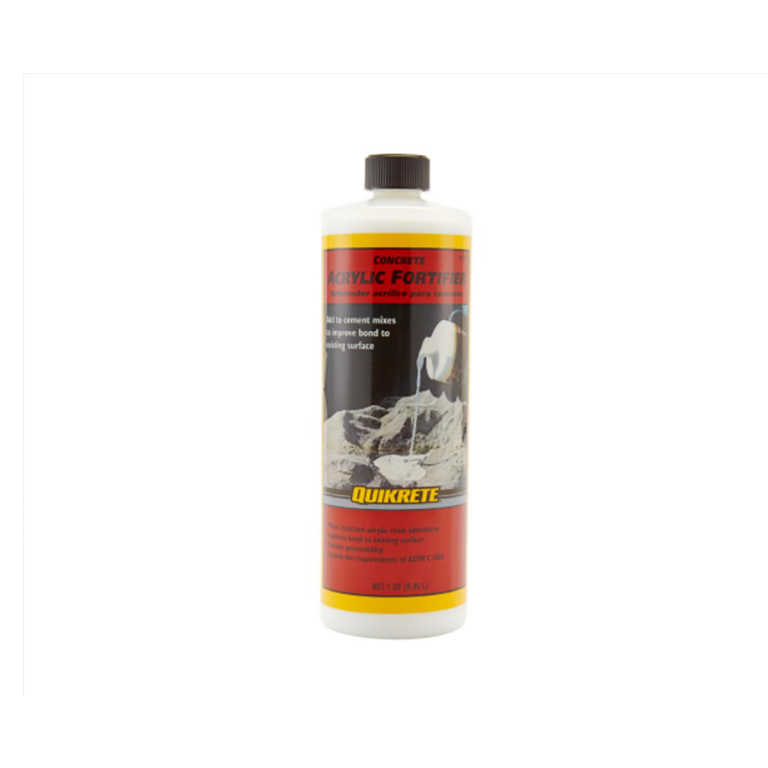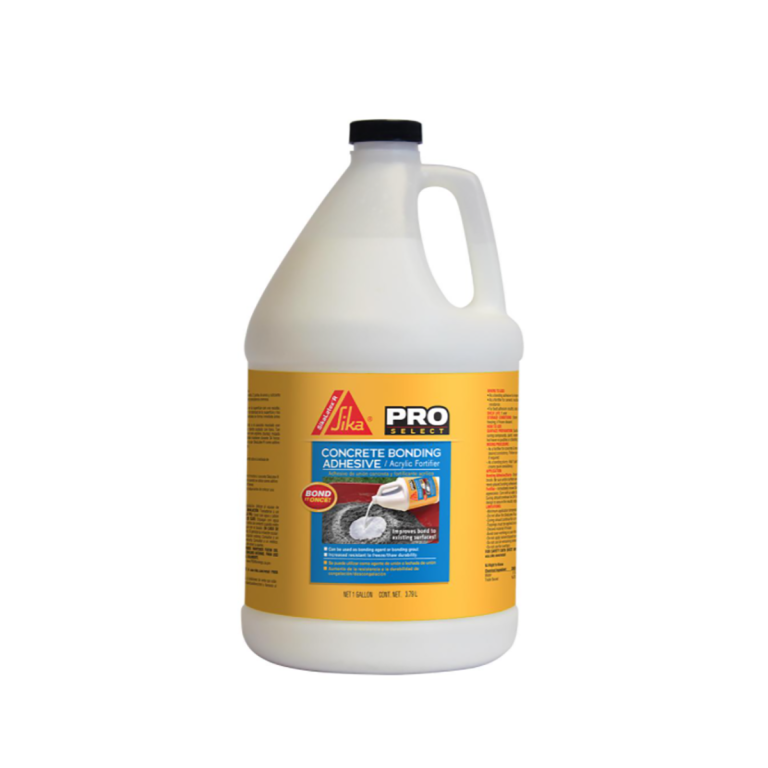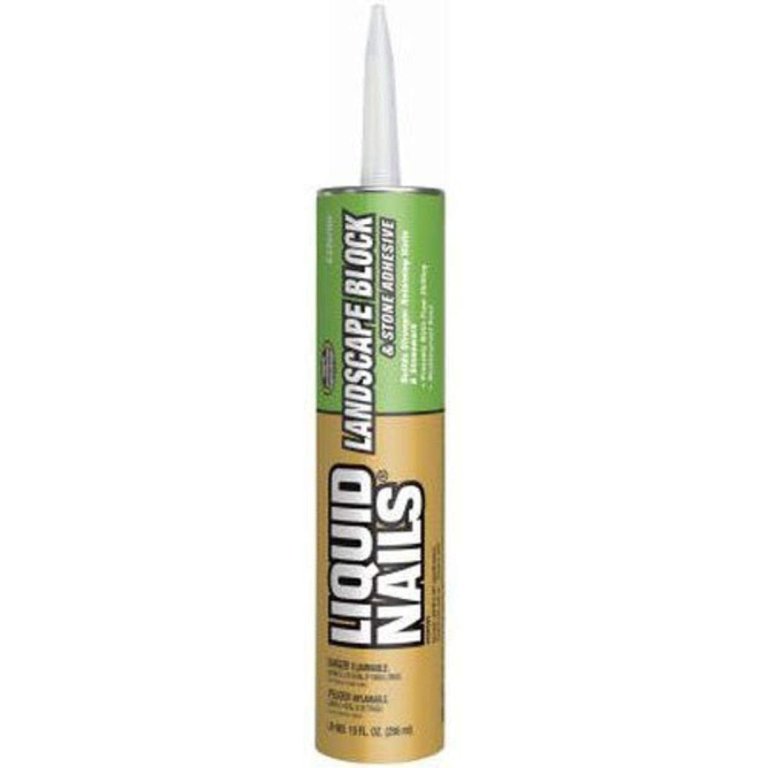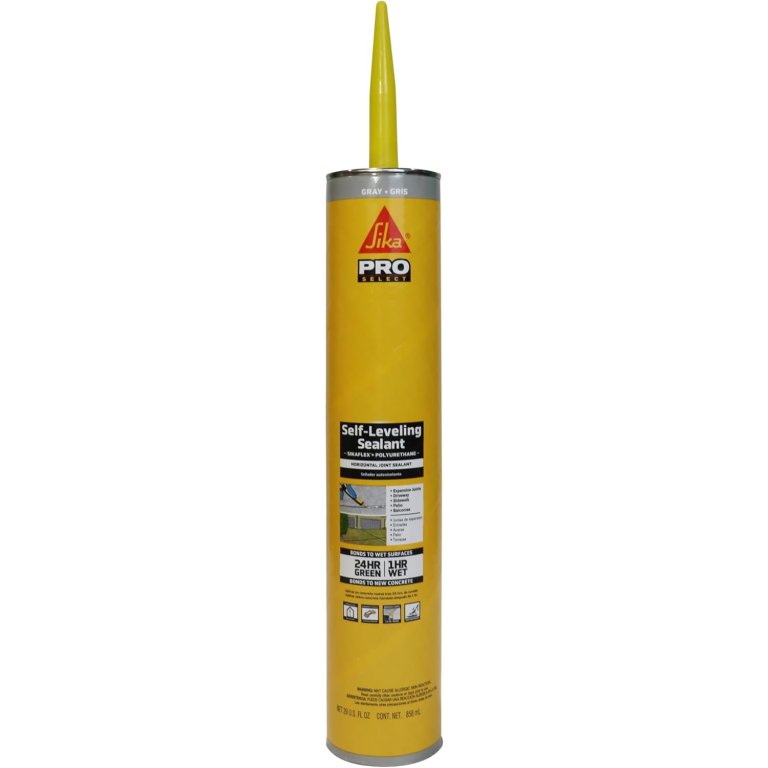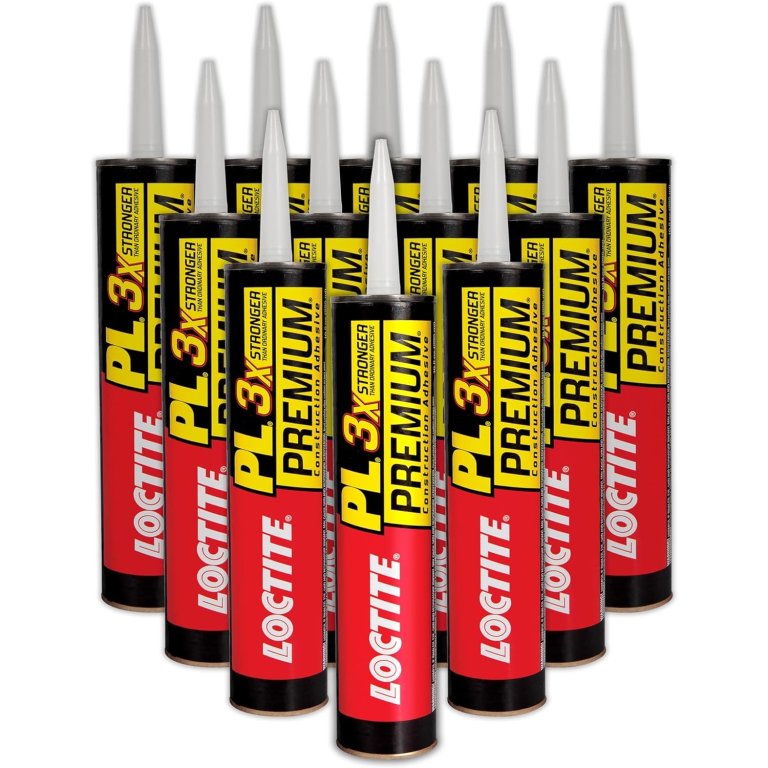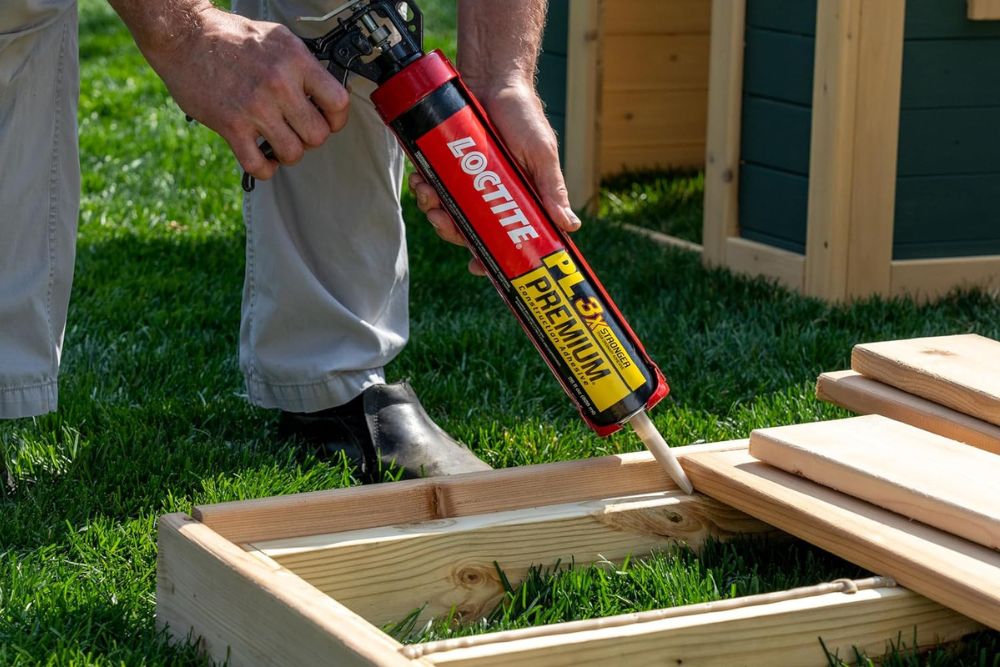
We may earn revenue from the products available on this page and participate in affiliate programs. Learn More ›
A lot goes into tackling a concrete repair or project. Unlike a carpentry project, you can’t just grab a stack of lumber and get to work. You have to wait for the right weather conditions, select the right cement mix, use the proper ratio, and work fast enough that the concrete doesn’t begin to set before you’re ready. You want to mix it right the first time to make sure it adheres properly.
To help avoid an unfortunate scenario, use the best concrete bonding agent. Whether mixing the agent with a slurry or using an agent to bond two concrete surfaces together, a high-quality product can get the job done.
Our pick as the best overall concrete bonding agent is the Quikrete Concrete Crack Seal. We chose it for its precision application tip, large 38-linear-foot coverage area, and quick 72-hour curing time. However, all of the selected concrete products on this list were vetted for effectiveness and reliability.
This guide will help you choose from some of the best concrete bonding agents for your project. Plus, some of these products have been hands-on tested by our staff to ensure they were up to snuff.
- BEST OVERALL: Quikrete Concrete Crack Seal
↓ Jump to Review - RUNNER-UP: Quikrete Concrete Bonding Adhesive
↓ Jump to Review - BEST BANG FOR THE BUCK: Quikrete Acrylic Fortifier
↓ Jump to Review - BEST FOR COLD TEMPERATURES: SikaLatex Concrete Bonding Adhesive
↓ Jump to Review - BEST FOR CONCRETE BLOCKS: Liquid Nails Landscape Block Adhesive
↓ Jump to Review - BEST FOR CRACKS: Sikaflex Self-Leveling Sealant
↓ Jump to Review - BEST POLYURETHANE: Loctite PL Premium Polyurethane Construction Adhesive
↓ Jump to Review
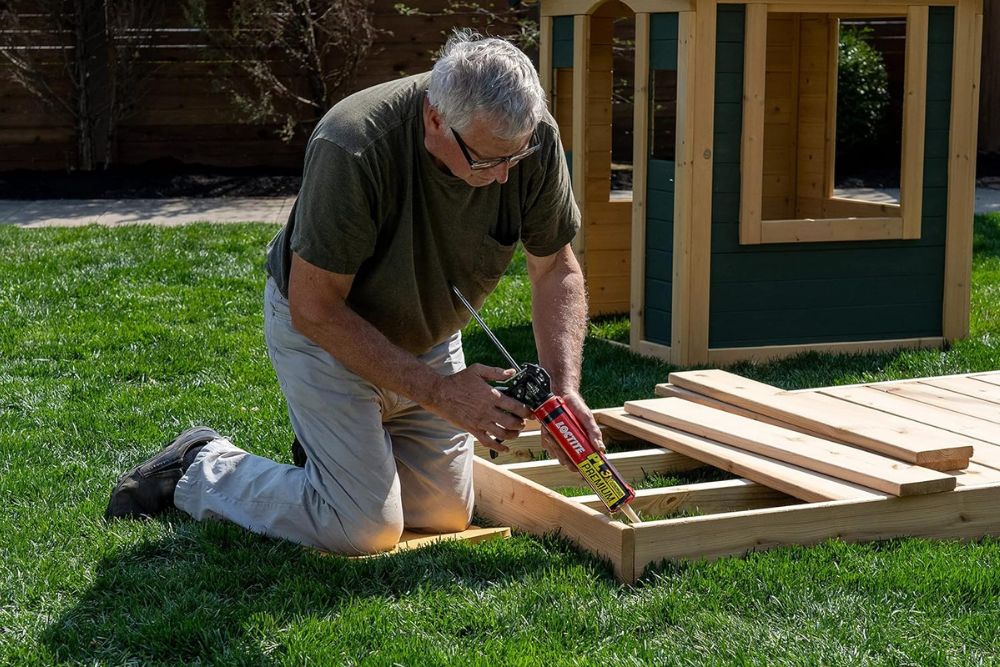
How We Chose the Best Concrete Bonding Agents
We researched the most sought-after concrete bonding agents in their respective categories and discovered that the best options are determined by their adhesion, coverage area, ease of use, and other features included by top brands.
After extensive product research, we included concrete products in our list of top picks made with polyurethane, latex, acrylic, and more for weatherproof adhesion. These products provide coverage for areas between 24 and 38 linear square feet and those up to 75 square feet. They can be used on driveways, walkways, patios, garages, basements, and more.
We also wanted to make sure that these concrete adhesives were easy to apply, so we included products with precision tips, caulking gun containers, and solutions that could be added to concrete mixes or applied with sprayers. Finally, we also included products that have self-leveling formulas that are suitable for a variety of materials. We even listed options that could be painted, stained, or sanded after application.
Our Top Picks
Before you call in an expert in concrete crack repair, take a look at these top products. These bonding agents for concrete included some that were hands-on tested, and each of our picks is organized by category and comes with a list of pros and cons.
Best Overall
Quikrete Concrete Crack Seal
What We Like
- Comes with a precision applicator for filling in cracks up to ½ inch wide and ¼ inch deep
- The 1-quart bottle has enough product to cover 38 linear feet of cracks and breaks
- Can be used in temperatures above 45 degrees Fahrenheit; will not shrink or warp
What We Don’t Like
- Long curing time compared with some other options on the market
Product Specs
- Coverage area: 38 linear feet
- Curing time: 72 hours
- Application: Precision tip
Quikrete Concrete Crack Seal provides an affordable and effective solution to broken or cracked driveways, walkways, and commercial areas. Based on reviews and hands-on testing, this 1-quart bottle can fill 38 linear feet of cracks up to ½ inch wide and ¼ inch deep.
This self-leveling latex concrete crack filler also provides a durable and non-shrinking finish, is safe to use in temperatures above 45 degrees Fahrenheit, and has a curing time of 72 hours. Plus, it can be used right out of the bottle and has a precision applicator tip.
What our tester says: Mark Wolfe, a Bob Vila staff writer and product tester, noted about this product in the Best Concrete Crack Filler that “Quikrete Concrete Crack Seal worked as described in our tests. It was one of the easiest products to apply, and there was no need for specialized tools. There is nothing to add, and it only needs to be agitated for a minute or two before applying. This latex repair solution has a working texture much like thick paint, allowing it to seep smoothly into narrow cracks. However, it cures slowly enough to flatten out for a nice smooth finish.”
Get the Quikrete latex concrete bonding agent at Lowe’s or The Home Depot.
Runner-Up
Quikrete Concrete Bonding Adhesive
What We Like
- Versatile formula can be used as a primer, slurry coat, or concrete resurfacer for smooth and repaired concrete
- Can be applied with a brush, roller, or spray depending on the intended use
- Can be used on a variety of surfaces including concrete, pavement, pipes, and more
- Clings to smooth materials to keep dirt and contaminants off the surface
What We Don’t Like
- Not suitable for use on porous surfaces; some prep may be required before application
- The product should be used promptly after purchase as it can expire and lose its effectiveness
Product Specs
- Coverage area: 35 to 75 square feet
- Curing time: 2 to 3 hours
- Application: Brush, roller, or spray
For a concrete bonding agent that can help create a first-rate finished product on a range of different concrete projects, check out Quikrete’s Concrete Bonding Adhesive. Use this product as a paint-on adhesive, coating the base surfaces with a sprayer, roller, or brush before applying a fresh coat of concrete. Alternatively, mix it with a slurry in place of water, using two parts cement to one part bonding agent.
One of the best features of this agent is that it doesn’t require the user to roughen the surface before applying. While other products might require laborious scuffing with a wire brush, the adhesive will cling to smooth surfaces, provided they’re free of dirt and contaminants.
Get the Quikrete concrete bonding agent at Lowe’s or The Home Depot.
Best Bang For The Buck
Quikrete Acrylic Fortifier
What We Like
- Can be added to a current cement mix for increased adhesion and durability
- Begins to harden in just 5 minutes and completely dries in 3 hours
- Affordable compared with some other options currently available
What We Don’t Like
- Must be mixed before use according to the manufacturer’s directions
Product Specs
- Coverage area: Customizable
- Curing time: 3 hours
- Application: Mixed with cement and applied
Repairing cracks, chips, and missing chunks from the edge of a concrete surface can be a messy proposition unless you use time-consuming forms to hold the slurry in place. To save time and money on the next repair, consider this Quikrete Acrylic Fortifier.
The agent mixes in with the cement mixture in place of water. It promotes adhesion with the existing concrete while also stiffening the concrete mix, so it holds in place without sliding off the pad. This fortifier makes the concrete mix begin to harden within 5 minutes, so be sure to mix only as much as you can use in that time frame.
Get the Quikrete acrylic concrete bonding agent at The Home Depot.
Best For Cold Temperatures
SikaLatex Concrete Bonding Adhesive
What We Like
- Improved adhesion strength and durability; can be used for bonding concrete to concrete, mortar, grout, stucco, and terrazzo
- Resists shrinkage in freezing temperatures and does not produce a vapor barrier
- Comes in multiple sizes to accommodate small to large projects
What We Don’t Like
- Takes a long time to dry relative to other options on the market
Product Specs
- Coverage area: Unlisted
- Curing time: 24 hours
- Application: Brush, roll, or spray
If cold temperatures threaten to wreak havoc on your concrete repair, consider SikaLatex Concrete Bonding Adhesive. Brush, roll, or spray it onto the existing concrete surface, or use it as a water replacement in a concrete or mortar slurry. Alternatively, use it in a grout mixture—a particularly attractive option for tile floor surfaces in unheated mudrooms.
While it works as a fortifier and bonding agent, the acrylic polymers increase the repair job’s resistance to freeze-thaw cycles, allowing the concrete patch repair to last longer. If used as a repair slurry, coat the area and immediately apply a finish coat, speeding up the repair time considerably.
Get the SikaLatex concrete bonding agent at Amazon or The Home Depot.
Best For Concrete Blocks
Liquid Nails Landscape Block Adhesive
What We Like
- Creates a weatherproof bond that will not shrink or warp with changing weather
- Suitable for use on brick, masonry, or concrete surfaces; treats up to 30 linear feet of cracks up to ¼ inch deep
- Easy to apply with a caulk-style precision applicator
What We Don’t Like
- Takes a long time to dry relative to other options on the market
- Larger projects may call for a large application volume for proper adhesion
Product Specs
- Coverage area: 30 linear feet
- Curing time: 24 hours
- Application: Caulking gun
Block walls have lots of places where water can sneak in and cause serious issues. Liquid Nails Landscape Block Adhesive creates a weatherproof bond that resists water’s effects, resulting in a long-lasting concrete wall, garden bed, or masonry project.
The Liquid Nails mixture comes in 10-ounce tubes that are easily installed in a standard caulking gun. This allows application of just the right amount of product without having to deal with messy cement bags, buckets, and mixing. Simply squeeze the appropriate amount on the base course of blocks and set the new course on top. It can be used to build new walls or repair old ones, and it works with concrete, stone, and brick materials.
Get the Liquid Nails concrete bonding agent at Amazon, The Home Depot (12-pack), or Walmart.
Best For Cracks
Sikaflex Self-Leveling Sealant
What We Like
- Flexible and self-leveling formula fills cracks up to 1½ inches wide and ½ inch deep
- Suitable for driveways, sidewalks, garages, and some pavement varieties
- Can be stained, painted, and sanded after it’s cured to blend into any surface
What We Don’t Like
- 3- to 5-day curing time may not be ideal for commercial concrete applications
Product Specs
- Coverage area: 24 linear feet
- Curing time: 1 to 2 hours (dry), 3 to 5 days (cured)
- Application: Caulking gun
Ease of use and effectiveness meet in this concrete bonding agent from Sikaflex. Made to be applied with a caulking gun, this adhesive is self-leveling, fills cracks 1½ inches wide, and remains flexible after application, even when submersed. The 10.1-ounce container fits most caulking guns and covers up to 24 linear feet of cracks on concrete driveways, garages, sidewalks, and some pavements.
Once cured in 3 to 5 days, this concrete sealer can be stained, painted, and sanded. However, this is the longest curing time of any of the adhesives on this list.
What our tester says: Mark Wolfe, a Bob Vila staff writer and product tester, had this to say in our guide: “Sikaflex was so affordable, effective, and easy to use, even though it took a bit longer to cure than other options. We tested the XL size, and it delivered excellent results. It went on smoothly with average hand pressure and no drips. It settled neatly into the cracks and formed a tack-free skin after a few hours. Full cure took 5 days in our cool temperatures, which was longer than most of the other products we tested.”
Best Polyurethane
Loctite PL Premium Polyurethane Construction Adhesive
What We Like
- Bonds to most common construction materials for excellent versatility
- Low-VOC formula is ideal for the eco-conscious user; suitable for interior and exterior applications
- Cures leveled and completely weather-resistant and waterproof no matter the temperature
What We Don’t Like
- Product can be hard to remove once it’s applied
Product Specs
- Coverage area: Unlisted
- Curing time: 30 minutes (dry), 24 hours (cured)
- Application: Caulking gun
Sometimes all it takes to get the job done is a classic. If you prefer the age-old approach for repairs, check out Loctite’s PL Premium Polyurethane Construction Adhesive. This construction adhesive comes in a small 4-ounce squeeze tube, a large 28-ounce cartridge, and a standard 10-ounce tube cartridge that’s designed to fit most caulking guns.
PL Premium can create a bond between almost any two materials that are in almost any condition. It can bond with frozen or wet concrete and other surfaces and will cure even in cold temperatures. Its polyurethane base makes it waterproof and weather-resistant, so it can tackle outdoor concrete projects and repairs.
Get the Loctite concrete bonding adhesive at Amazon (12-pack), Ace Hardware, or The Home Depot.
Jump to Our Top Picks
What to Consider When Choosing a Concrete Bonding Agent
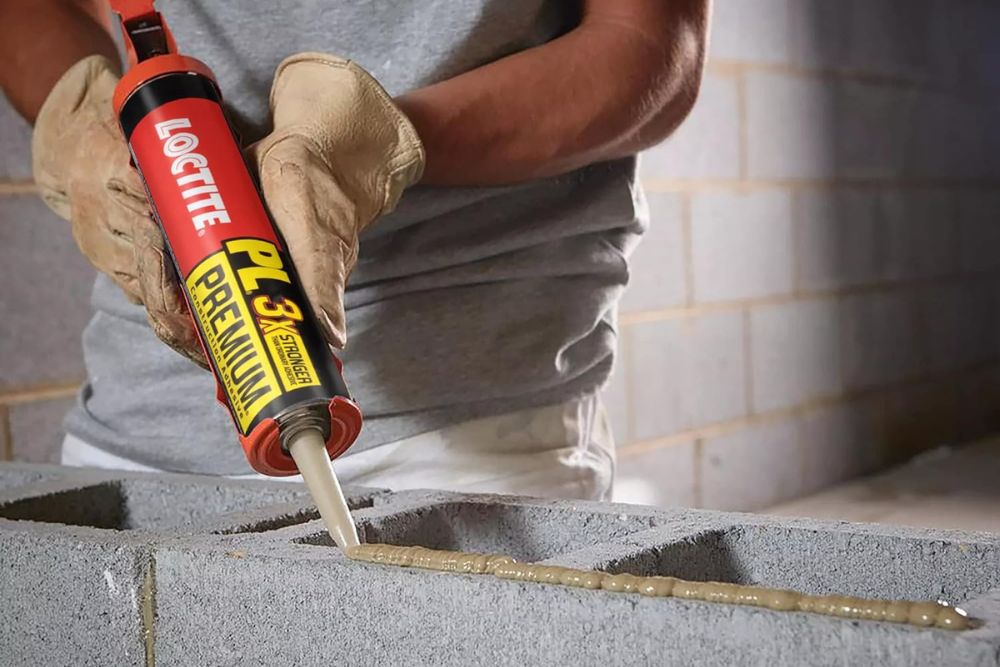
When choosing the best concrete bonding agent for your project, it’s important to be aware of a few factors. Learn how to use the agent, how to condition the surface, and how to determine if the agent will provide waterproofing.
Adhesion
A concrete bonding agent needs effective adhesion to work correctly, and latex, epoxy, acrylic, and polyurethane are some of the most effective options to choose from. While acrylic and polyurethane usually come in a ready-to-use form for repairing concrete, epoxy and latex options have bonding agents that can be mixed into concrete, mortar, and paint to increase durability and strength.
Many concrete bonding agents are also versatile and can be applied to old concrete, brick, stone, mortar, pavements, and more.
Instructions
To avoid completing the same project twice, be sure to follow the directions listed on the concrete agent’s packaging. More than any other factor, using the product in the exact manner that the manufacturer recommends is the best way to achieve the best results.
Bonding agents often can be used in different ways. They can cover an existing surface or mix directly into the concrete mix. Other products require two or three different chemicals to activate properly.
Surface Contaminants
Typically, the product is of little importance if the intended surface is dirty, dusty, or corroding. For any material to bond to a surface in this type of condition, it’s important to be mindful of surface preparation. The best way to clean the surface is to use a mild detergent and water, though a power washer might speed up the process. To remove some surface grittiness or flaking paint, use a handheld wire brush.
Once the surface is clean, keep down the dust. Mix the concrete away from the surface to avoid dust or mud from splashing up and causing adhesion issues.
Waterproof Ability
While it takes water to turn cement into concrete, water can be concrete’s worst enemy. If water makes its way into the concrete surface and freezes, it can split an otherwise perfect surface with ease. It can even pop a brand-new concrete patch right off your concrete surface.
Water can do the same thing to a type of glue or polyurethane compound, though their flexibility makes them a little more resistant to cracking.
Using a waterproof bonding agent helps thwart the negative effects of water on a project. Check that the product provides a waterproof surface before using it in an outdoor setting.
FAQs
Bonding concrete isn’t necessarily rocket science, but masonry can be a little mysterious. If you still have some questions about the best concrete bonding agents, you’re not alone. This section features a collection of the most commonly asked questions about bonding concrete. See if you can find the answer to your question below.
Self-leveling concrete glue adhesive is made to be applied over existing old concrete. For these applications, we recommend the SikaLatex Concrete Bonding Adhesive as it can bind old and new concrete together effectively.
Bonding fresh concrete to an existing layer can be done in a few simple steps:
1. Loosen and clean the old concrete surface and ensure no loose fibers or concrete pieces are left behind.
2. Mix the bonding agent (if required) and apply the new concrete or cement adhesive as directed by the manufacturer. Ensure there is minimal runoff in the crack or break.
3. Allow to cure.
It depends on the project. If it’s a pad or slab repair, mixing concrete with a bonding agent allows you to work quickly and form the repair to the pad. If you simply want to stick a block to another block, a polyurethane-based construction adhesive will do the job.
The most common use for bonding cementitious materials is to build block walls without mortar joints, but you can use it to bond two other concrete surfaces as well.
Surface bonding cement is waterproof. It consists of Portland cement, fine aggregates, and fibers, which combine to create a waterproof surface when cured.


